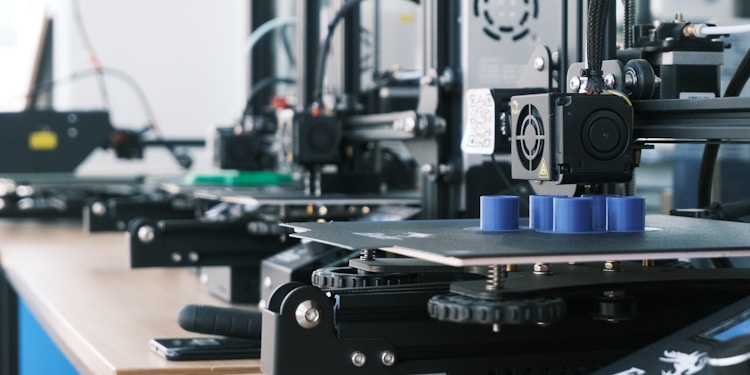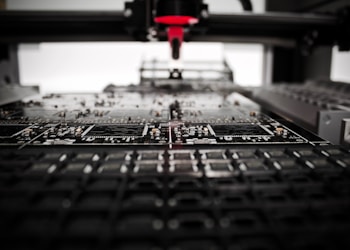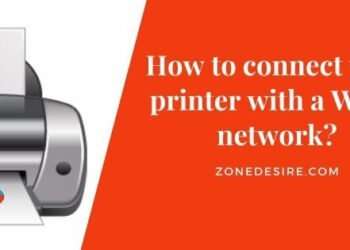The progress of 3D printing in recent years has been gaining momentum at an extremely rapid pace. It seems like we will soon stop talking about what can be created using this device since it will be easier to mention what cannot be manufactured by it. And even this list will be shrinking.
The most important thing here is that 3D printers have ceased to be expensive tools. Today they are available not only to large companies and leading research centers. Even a child can become a user of a 3D device. Moreover, their prices start at just a few hundred dollars. So, 3D technology is not considered to be a pricey toy but rather a useful gadget.
The usage of such technologies is revolutionizing educational methods. It takes the teaching process to a completely new level. Of course, it is difficult to implement 3D technologies in humanities and use them in literature or language classes. Unless you are going to create small models of famous writers and poets. Still, 3D technologies can be integrated with other disciplines and sciences.
3D printing significantly increases the involvement in the learning process. Indeed, it makes students feel like real innovators. Even those who consider themselves far away from engineering will be interested in creating something with this technology. Indeed, it does not require any special technical knowledge and skills.
A 3D printer is a great help for students of various faculties as well as scientists and other researchers. Let us get to know better the capabilities of this technology and its main advantages.
3D Printing for Technical and Creative Specialties
3D technologies are most popular in technical universities. Students can design objects, parts, and mock-ups in the classroom. They can make prototypes of their draftings to further check and test them.
Traditional methods of building models are too time-consuming. Moreover, many students consider them ineffective and obsolete. With the help of 3D technologies, the procedure can be accelerated. Creating a layout or model, improving their quality, reducing costs and time for the project preparation… All these are the dreams of any student of the Faculties of Architecture or Engineering.
Sometimes 3D technology is given a second name which is “rapid prototyping”. For several years now, architecture students have been presenting a 3D model along with their graduate projects.
Modified Theatrical Performances
It is impossible to create a quality performance on the stage without the inventory and decorations. And here comes one of the most difficult tasks for students when preparing the action. Cutting, gluing, drawing, folding – an endless process that rarely brings pleasure. Why not devote those precious hours to learning the texts of favorite poets and playwrights? The best way to economize time is to apply a 3D printer.
3D printers make it possible to create models of varying complexity from different materials. Thus, students of theatrical art can produce a wide range of products. They vary from small jewelry to one-piece suits and decorative elements.
Using 3D Technologies for Medical Purposes
Students of medical educational institutions can also benefit from the usage of three-dimensional technologies. To boost the knowledge and understanding of anatomy they can produce models of human organs.
Let’s agree that anyone would rather trust a doctor who has practical experience. Medical students should be able to get as much practice as possible before they become full-fledged professionals. Direct interaction with the human body is crucial for this purpose. In fact, it is often difficult for students to perceive the human body as a three-dimensional object.
Throughout the history of anatomical science, universities used corpses for students’ training. Nowadays, with the rise of 3D printing, students are able to practice with anatomically correct plastic models.
Cooking and 3D Printing: How Is This Possible?
You might wonder what additive technologies have to do with kitchen utensils. The most obvious thing is that even the simplest 3D device can make various harmless kitchen appliances with low cost and excellent performance characteristics.
Students can design intricate forms and molds for their crazy ideas in confectionery or other spheres of gastronomy.
Moreover, food 3D printers are already a thing. They work by the same principle as regular ones. The only thing is that the food ingredients are used to “fuel” the device. A memory of such devices can store huge lists of recipes as well as add and process new gastronomic ideas.
3D Printing in Geography Courses
Additive technologies are used in the sphere of geography and geology. 3D maps can be used to depict the topographic features of the landscape in a more detailed manner.
3D printers provide new opportunities for presenting information economically and efficiently. There is no doubt that visualized information is digested faster than text material.
3D Printing of Museum Exhibits
With the help of three-dimensional printing, the need to visit museums is gradually waning. Recently paleontology has taken a significant step forward with the implementation of progressive research methods. Scientists managed to print dinosaur robots. They can be used by student paleontologists for closer examination. They will further test hypotheses about the interaction of prehistoric creatures with the environment.
The Inseparability of Design and 3D Technologies
Nowadays, 3D technology also finds its application in the fashion industry. From printed shoes to glasses and clothing – all these can be the basis for future fashion trends.
Indeed, the first pair of shoes, created on a 3D printer by the efforts of Swedish students appeared in 2011. Today, such three-dimensional pieces of clothes are present on the world’s leading catwalks.
Conclusion
The advantages of using 3D printing for learning purposes are obvious. Such technologies not only help the assimilation of knowledge in traditional disciplines. They also help with learning specific skills that are in high demand today. We live in a time when technology allows us to solve a wide range of problems. It opens up more opportunities for the implementation of various ideas. So, students that keep up with such trends can become more skillful specialists upon the completion of their studies.












